This site contains affiliate links. As an Amazon Associate, I earn a commission from qualifying purchases at no extra cost to you. Full Disclosure Here.
For the past six weeks, I have been exploring alternatives to over-the-counter ointments, salves, and beauty products. Not only are these products expensive, but as I have learned time and time again, they don’t always work.
Starting with a basic formula for healing salve that I found on the internet, I decided to make my own all-purpose salve and to test it on various ailments to see how it worked. I added a bit of this, subtracted a bit of that and came up with I call my own Miracle Healing Salve. The funny thing is that when the final results came in, the formula that worked the best as an all-purpose salve was a version included the same blend essential oils I have been using for muscle aches these past ten plus years. Go figure.
Also Read: Preppers Guide

As easy as this Miracle Healing Salve is to make – and it is easy – it just works. I will share some of the uses that I have become ecstatic about but first, the recipe.
Miracle Healing Salve – The Recipe
Ingredients:
1 Cup Coconut Oil (not fractionated)
1 Cup Extra Virgin Olive Oil
5 Tbl. Organic Beeswax Pastilles
Containers:
8 each – 2 ounce jars or containers **OR**
4 each – 4 ounce mason jars
To each 2 ounce jar add: (double if you are using 4 ounce Mason jars)
5 drops Lavender essential oil
5 drops Rosemary essential oil
5 drops Peppermint essential oil
a few drops of Vitamin E (optional)
1. Put a pot of water on the stove to simmer. While the water is heating, put the coconut oil, olive oil and beeswax pastilles in a heatproof jar or measuring cup.

2. Set the jar filled with the coconut oil, olive oil, and wax into the water and leave it there until it melts, giving it a stir from time to time. You want a slow, gentle melt so take your time. It could take 15 or 20 minutes depending on the temperature of the water bath.

3. While the ingredients are melting, drop your essential oils into each of the containers. Hint: I have found that it is easier to use a glass medicine dropper than the dropper that comes with the bottle of essential oil. This is optional and a matter of personal preference.

4. Pour the melted oils into each of the smaller jars containing essential oils. There is no need to stir unless you want to since the oils will mix up on their own.

5. Cover the jars with a paper towel or cloth and set them aside for up to 24 hours. Although the salve will start to firm up within minutes, it takes at least 12 hours to complete the firming process. (The purpose of the cover is to keep out dust, bugs and other nasties that may be floating around.)

A Word About the Ingredients
Coconut oil is a natural moisturizer and is antibacterial. Olive oil is chock full of antioxidants and has anti-inflammatory properties.
Lavender is a natural antibiotic, antiviral, antifungal and antiseptic. It is a master healer that also helps to prevent scarring. Rosemary is also antiseptic and an excellent treatment for muscle aches. Peppermint is an anti-inflammatory and is also antiseptic. Are you seeing a pattern here?
The optional Vitamin E is an antioxidant and is also used as a natural preservative.
10 Ways (So Far) to Use Miracle Healing Salve
These are the ways I have used this salve with success. I am sure there are others that are yet to be discovered but these make a darn good start!
1. Hand and foot moisturizer: An unbelievably emollient hand and foot moisturizer. No more dry hands and feet.
2. Relief for nocturnal foot and muscle cramps (rub on the bottom of your feet and on your calves before going to bed – this really works!)
3. Eliminates symptoms of eczema and psoriasis: With the addition of 5 to 10 drops of Melaleuca oil (tea tree) to a jar of Miracle Salver, the patch of psoriasis on Shelly’s elbow has all but disappeared. In the past he has tried everything including diet changes and prescription drugs. It has taken about 3 weeks for the Miracle Healing Salve to do its thing. Gone are the ugly crusty patches.
4. Antiseptic Ointment for life’s little bumps and bruises: Instead of Neosporin, reach for Miracle Healing Salve to both soothe and heal cuts and scrapes.
5. Promotes healing of scars: Slather the Miracle Salve over new scars and watch them heal in days rather than weeks. You can barely see the scar from my recent surgery. It is no longer tender, red and angry looking.
6. Makeup Remover: Smear on your face the wipe away your makeup with a damp washcloth.
7. Facial moisturizer and serum: Yes, really. You would think it would be greasy but the oils absorb quickly and leave your face with a nice, dewy texture.
8. Cuticle and nail conditioner: No more ragged cuticles or dry, splitting nails. This is a byproduct of being diligent about #2. It just happened without my realizing it.
8. Hair serum: A few drops liquefied in your palms and then smoothed over your hair will leave it shiny and less fly-away.
10. Relieve pet scratching and itching: Tucker the Dog was scratching himself in one spot on his belly so I put a little Miracle salve on the spot and a couple of days later he stopped. Was it the smell, the healing properties or just a coincidence? I don’t know but it worked.

Items replaced by Miracle Healing Salve
Wild Plant Version of Gaye’s Miracle Healing Salve
By Donna Schott
A number of years back, I found Gaye’s recipe for an essential-oil based DIY Miracle Healing Salve that she found effective on everything from cuts and rashes to sore muscles and eczema. I made the recipe, and have been using it ever since as my go-to first aid salve, replacing Neosporin, Cortisone, aloe vera gel, and other relatively pricey products from the local pharmacy.
In a survival or bug-out situation, however, essential oils may not be available. Once your existing stock runs out, it could easily become difficult or impossible to replace them. That’s why knowing a few common wild medicinal plants can be a life-saver.
A whole array of plants with medicinal qualities grow commonly in yards and urban areas, giving you a surprising bounty of raw material to make your own DIY Miracle Healing Salve even without any essential oils.
Using Common Medicinal Backyard Weeds
To help you be able to make your own medicine regardless of essential oil availability, I’ve re-imagined Gaye’s original recipe with some of these common medicinal backyard weeds. I have listed a number of plants for the ingredients that all have similar healing qualities, so finding and using any combination of them will make a potent salve.
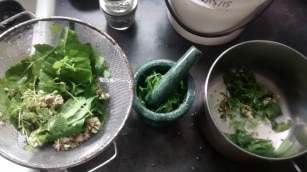
If you’re in a survival situation and don’t have coconut oil, you could make a liquid rub with olive oil or any other fat that is safe to spread onto the skin. You could conceivably even process animal fat for this purpose.
The thing I use this stuff for most is mosquito bites, which I get all over my body in the form of itchy red welts. Mosquitos are a scourge during southern summers, and aside from a momentary cooling sensation, nothing I’ve ever bought at the store seems to help the itch.
After rubbing on a generous amount of this wild plant-based miracle salve, on the other hand, I completely forget about the bites after about five minutes. The itch is erased.
I use it in any of the ways I’d use Gaye’s original healing miracle salve: cuts, scrapes, wounds, boils, rashes, you name it! After giving some of it as a gift, I even got feedback that it helped relieve itching associated with menopause. It’s also pet-safe!
Ingredients:
- 3-4 cups coconut oil
- Half a teaspoon of olive oil infused with vitamin E (optional, but adds nutrients and acts as a preservative)
- 5 tablespoons beeswax
- 1-2 cups slightly crushed medicinal leaves and flowers
Medicinal Plants:
Below is a quick listing of the plants that you can use, with some identifying characteristics and images. Look for these in your yard and around your property, and you’re likely to find many of them just beyond your door. They even grow in parking lots!
For details on the medicinal properties of each of these, take a look at this great resource. I’d expect a salve that used any combination of 2-4 of these plants to be effective, but at the risk of overkill, my version uses them all:
1. Common Plantain Leaves (Plantago major)
Common Plantain has nothing to do with the banana plantains you see in stores. It has tough ovoid leaves with distinctive veins and grows in a basal rosette. Tiny flowers form on a stalk.
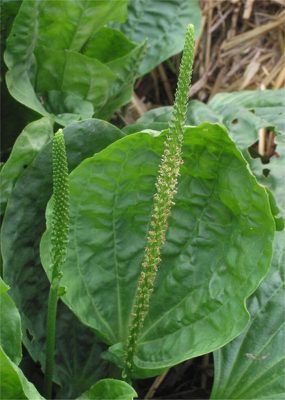
Once a mainstay in native Indian medicine, homeowners from California to Maine now work all spring and summer trying to vanquish this powerful healing plant from their yards.


It is very similar to the common broadleaf variety, except the leaves are lanceolate instead of ovoid.
2. Narrowleaf Plantain Leaves (Plantago lanceolata)
This cousin of the broadleaf plantain has tough, lance-shaped leaves that grow in a basal rosette near disturbed lots, roadsides, and lawns.
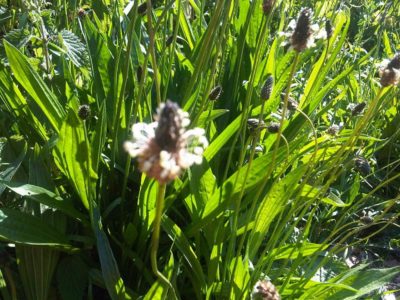

3. Ground Ivy Leaves (Glechoma hederacea)
Ground Ivy is a creeping plant with scalloped leaves and small blue flowers. All parts smell minty when crushed.

The stem is square, not round, and leaves are alternate, meaning the leaf pairs appear in a staggered pattern along the stem.

4. Wood Sorrel Leaves (Oxalis)
Usually mistaken as clovers, wood sorrel leaves have a shamrock-like appearance.
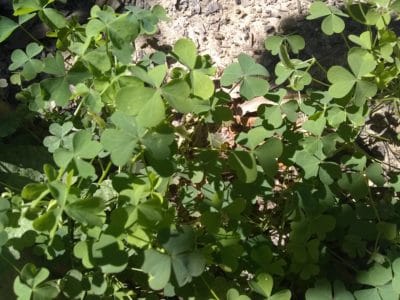
The flowers are small and can be either white, yellow, pink, or purple.

5. Red and White Clover Flowers (Trifolium pratense/Trifolium repens)
For most newbie foragers, this common weed is as easy to identify as a dandelion. The flowers have been prized for centuries for their medicinal qualities.


Step 1: Gather and Crush the Plants
I used about two cups’ worth of total plant material for a liter or so of salve, using approximately equal amounts of each plant with the exception of wood sorrel, which I only used a very small amount of.
You can make a smaller recipe and the amount of plant matter doesn’t have to be precise, just err on the side of too much to ensure your formula is potent enough. Once they are gathered, use a colander to rinse them thoroughly.
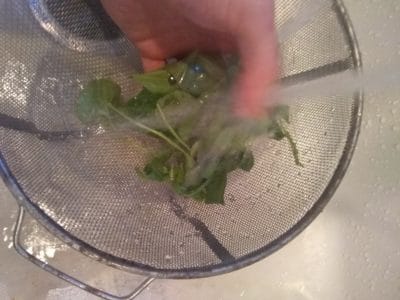
Then use a mortar and pestle or other technique to crush them slightly, just enough so that those membranes are broken and the leaves release a bit of juice.
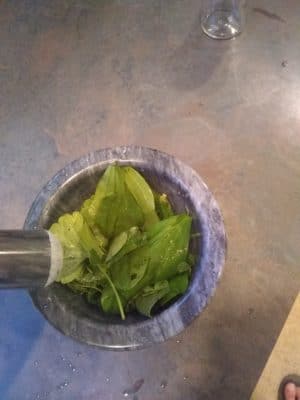
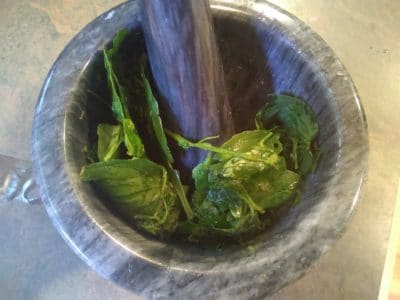
Then I put them into a pot with the coconut oil.
Step 2: Patiently Simmer
Melt the coconut oil at extremely low heat, and make sure you’ve used enough oil that the plant matter is submerged once it melts. Now all you do is simmer, simmer, simmer.
I left mine on for about three hours, but it might be better to leave it on even longer to ease out more of those active chemicals from the plants. The oil should turn a nice green color.

After a few hours or more of simmering, strain the liquid out. There may be some plant matter that finds its way through, which is fine. I didn’t have cheese cloth, but it would have helped to keep some of that extra plant material out of my final product. I like to really try to squeeze the plants to get out as much of the oil as I can.
Step 3: Cool Down
Now just let it cool for about 24 hours. It should keep fresh for a long time – I’d say up to a year or longer in the fridge.
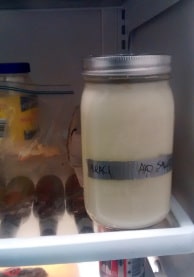
If you’re going to refrigerate yours, just rub your fingers on the salve until the warmth from the friction softens it enough to be applied.
Wild plant-based healing salve is cheaper, fun to make, and is even stronger and more effective (in my experience) than the myriad over-the-counter products it replaces. See what plants you find in your yard, and make a salve that renders store-bought first aid ointments obsolete!
Author Bio: Eric is a nature-loving writer, experience junkie, and former Boy Scout who never forgot that time-honored Scout Motto: Be prepared. Aside from camping and survival, he loves writing about travel, history, and anything he finds strange and unique!
If you enjoyed this article, consider following our Facebook page.
The Final Word
You have not heard the last of this. In addition to this DIY Miracle Healing Salve, I have made batches of Tea Tree Skin Ointment and Lemon Salve. These are themes of the basic formula that were put together to take advantage of the specific properties of oils used in their formulation. I am also experimenting with an infusions of dried oregano and olive oil.
As with all things at Backdoor Survival, I am testing first posting later. Stay tuned!
Enjoy your next adventure through common sense and thoughtful preparation!
Gaye
If you enjoyed this article, consider subscribing to email updates. When you do, you will receive a free, downloadable copy of my e-Book, The Emergency Food Buyer’s Guide.
You can also vote for Backdoor Survival daily at Top Prepper Websites!

Bargain Bin: Here are some links to items used to create your custom-crafted Miracle Healing Salve.
White Plastic Jar with Dome Lid 2 Oz (12 Per Bag): I often chose to use these small ointment jars rather than Mason jars for my salve. I also have similar jars in the 1 ounce size.
Ball Jar Crystal Jelly Jars with Lids and Bands, Quilted, 4-Ounce, Set of 12: Sometimes I use plastic and sometimes I use mason jars. Honestly? It is a matter of personal preference.
Beeswax Organic Pastilles, Yellow, 100% Pure 16 Oz: I ordered the white pastilles but have since learned that the natural yellow pastilles are better. That said, the difference may not be discernable – just be sure that what you purchase is cosmetic grade.
Glass Droppers, Pack of 6: I bought a package of these and loved them. When I went to re-order, I accidentally ordered plastic instead glass droppers. Learn from my mistake. The price is the same go get the glass ones.
Spark Naturals Essential Oils: These is what you need for the Miracle Salve: Lavender essential oil, Rosemary essential oil, and Peppermint essential oil. Enjoy a 10% discount on your Spark Naturals order with code BACKDOORSURVIVAL at checkout.
NOW Foods Essential Oils : My salves were made using essential oils from Spark Naturals. My sniff test tells me they are stronger and more pure smelling. For healing purposes, I feel they are superior. On the other hand, NOW Foods has decent essential oils at a budget price: NOW Foods Rosemary Oil, NOW Foods Peppermint Oil and Now Foods Lavender Oil.
Coconut Oil: Coconut Oil from Tropical Traditions is my preferred coconut oil. I love it so much I purchased a 5 gallon tub. Really, I did! I find it very silky to work with and love the taste when used in cooking. Note that no refrigeration is required and although it solid at room temperature, it melts at 76 degrees. The Nutiva brand from Amazon or Costco works well too.

Kirkland Signature Extra Virgin Olive Oil, 2 Liters (Product of Italy): If you have a Costco close by, get it their. Otherwise, you can use this or any other quality extra virgin olive oil.
The Complete Book of Essential Oils and Aromatherapy: I first became interested in aromatherapy and essential oils in the early 90s which was before they really became mainstream. I read every book I could get my hands on and dabbled at creating synergy’s (a combination of two or more oils that create a chemical compound that is greater than the some of its individual components). My bible then, and even now, is this book.
~~~~~~~~~~~~~~~~~~~~~~~~~~~~~~
~~~~~~~~~~~~~~~~~~~~~~~~~~~~~~
Amazon has a feature called Shop Amazon – Most Wished For Items. This is an easy tool for finding products that people are ‘wishing” for and in this way you know what the top products are. All you need to do is select the category from the left hand side of the screen.
The Amazon Top Most Wished For and Best Selling Outdoor Items
Emergency Preparedness Items from Amazon.com
Shop Amazon Tactical – Great Selection of Optics, Knives, Cases, Equipment
Amazon Gift Cards
Help support Backdoor Survival. Purchases earn a small commission and for that I thank you!
~~~~~~~~~~~~~~~~~~~~~~~~~~~~~~



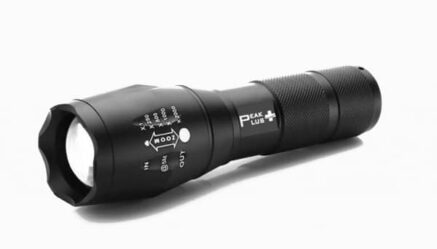






219 Responses to “DIY Miracle Healing Salve”
Can I use this on a 3 month old? He has extremely bad eczema all over and none of the doctors directions and things to use are working, he just keeps getting worse poor little guy.
Suzy – Sorry for the delay. I wanted to do some research before answering your question. From everything I have learned, yes, the healing salve should be perfectly fine on your infant. I did read a number of testimonials indicating that a blend of the following oils worked so you may want to start with these instead of those I wrote about in the article.
Per 4 oz jar add:
10 drops Lavender Essential Oil
8 drops Lemon Essential Oil
6 drops Melaleuca Essential Oil
Be sure to check back and let me know if this works!
Thank you for researching! I did some too and decided to go ahead and give it a go as momma was desperate. But the poor little guy woke up even crustier than before. My daughter said it turned yellowish and scabby. Is it suppose to do that???? Don’t know much about eczema but the only thing that seems to not crust him over is aquaphor but it’s not stopping it from spreading. I am ordering the Melaleuca you mentioned above and going to try this combination out and will let you know….
Wouldn’t the crusting and scabbing indicate that healing is going on? I recently had surgery on my right eye lid and a week later the scar was huge and oozy. The doc said to let it crust over and scab and sure enough, in a few days it got better.
I had been using the salve on my wound but switched to straight lavender and frankincense to promote the scabbing. It has now been two months and you have to look really hard to see the scar.
I would not recommend using a straight essential oil on an infant though. Perhaps dilute in some coconut oil first – worth a try as an alternative to the salve.
Where do you buy “non fractionated cocounut oil”? And what exactly is it? Thanks for your help.
non-fractionated coconut oil is “regular” coconut oil that is semi-solid and typically sold in a tub. There is a link in the Bargain Bin section of the article to coconut oil that can be purchased on Amazon but you can also purchase it at most grocery stores or even Costco.
In reality, the “fractionated” or liquid form is more difficult to find.
Question: Can I use some Coconut oil that is refined? Also, I’ll be infusing my dried herbs in Olive oil instead of using essential oil and thanks!
I think I finally have everything I need to make a batch! My husband has been having fantastic results on a patch of excema using a similar, but store-bought product (not sure if I should say it here, it’s “All Good Goop”), but it’s ridiculously expensive. The ingredients are almost identical to Miracle Healing Salve, except for the addition of comfrey and chamomile essential oils. Since I have those on hand, I’d like to add them to your recipe. How many drops of each would you recommend, and would I need to increase the beeswax?
I LOVE your blog! I’ve learned so much that my hubby calls me “crunchy granola.” I’m okay with that 🙂
Robynne – There is really no set rule as to how many drops of something “extra” to add. Also, the amount depends on the size of your jar. But as an example, if you added 10 drops each of the rosemary, lavender and peppermint, I would add the same for the add-ons. Another approach would be to take the original 30 drops and divide by 5 – so 6 drops each – to maintain the same proportions.
All that being said, feel free to experiment. That is what I do. And yes, I would add a bit more beeswax – 1 or 2 teaspoons – but that too, is a matter of preference. Some folk like a goopier salve than others.
Hope this helps.
Thank you so much for this!!!
Hello Gaye, I’ve been following your posts for a while however I haven’t actually taken the time to really thoroughly read much of your information, well tonight I have thank the good Lord. I wanted to check in with you first to say I am really very impressed with how informative your information is, I’m anxious to try your recipe, I have pretty severe arthritis, and pretty much have only used exercise to help it up to this point in my life, However I’m at a crossroads and needing something more, but I’m 53 and don’t take any medication for anything at all as of yet, and I really don’t want to start, not yet. I’ve read most of your comments with other viewers, and I think I’ve got a pretty good idea of what I need to get started, Now I’ve got to dig deeper into your older posts to see what I’ve missed by not taking more time to read all your posts.. Not for lack of interest, just lack of sit down time..lol I’m sure I’ll be paying better attention in the future.. Thank you for taking your time to help others.
Castor oil is good for pain and can be used as a carrier oil. I’ve never used castor oil w/ EO but see no reason they would not mix. Also dried cayenne pepper heaping 2-3 teas , 1/2 c olive oil in double boiler heated till good and warm turn off heat .Let rest 20 mins. Repeat 5-6 times . Strain thru a clean cloth ( cloth diaper). Add 1/2 oz beeswax and warm till melted. Porn into container to cool. Works great on pain just rub it in well , My husband loves it for back pain.
I am HIGHLY allergic to anything coconut. I was wondering if you’ve ever used anything in its place? If not, what would you suggest I try? Thank you.
Sheila – I have experimented using 100% olive oil. I did have to add about half again as much beeswax since the olive oil does not solidify like the coconut oil does. Other than that, it was fine. BTW, pure olive oil versus EVOO is less expensive, has less odor, and is lighter in color. The healing qualities are similar.
Gaye,
I have several friends who are incredibly allergic to nuts in the coconut/shea families and as a result when I craft for them I use just olive oil. If I’m crafting for someone whose allergies I don’t know, I also craft without tree nuts for the same reason.
You might want to consider adding to your experimenting list frankincense, which is well regarded for its skin care properties. Frankincense with lavender is divine. I love this combination for shower exfoliation (olive oil, sugar, oils) in the winter.
Your “how to” post is beautifully done!
My favorite diffuser blend is Frankincense and Clove (50/50). I love Frank and add it to almost everything I make for personal use. One reason I do not promote it more is that it is one of the more expensive oils and out of reach for a lot of my readers. It does, however, kick things up a notch, so for me, it is worth it.
Use grapeseed oil. It is much lighter and works great. Maybe a little pricey, though.
I have a couple of oregon grape bushes. Any way to make your own oil, etc. from berries, roots, etc? About all I know they’re good for is jelly. Very sour! I also have dry-eye problems. Anyone have any suggestions. Only thing I’ve found is suggestion to take flaxseed oil caps.
Pat..
Making you own oil is time consuming but it can be done..
1
Collect the pomace (the pulpy residue remaining after fruit has been crushed in order to extract its juice). Place it in a dehydrator and dry it fully. this will take eight to 12 hours. You may have to do this several times to get enough dried pomace, since the grape seeds produce very small amounts of oil.
2
Remove the seeds from the rest of the pomace. You also need to shell the seeds. This can be a slow process. Get the kids to help.
3
Get a couple of plastic containers, one larger than the other..
(You can also use cans)
Cut or punch several small holes in the bottom of your larger container. Then put the seeds inside and place the smaller container inside the larger one. This will be your press. Hold the press over a bowl and press out your oil. Store the oil in bottles for later use.
The oil is good for cooking or for your skin (softens wrinkles)..
……………………………
Dry eye is usually caused by blockages, you can help to clear these with massage.. Try massaging the eyes underneath with the knuckle of your thumb from the inner corner of the eye out (not the other way). also under the eyebrow in the same manner..
This can often help clear blockages.. Also when watching tv or computer, take blink breaks often.. When going outside for extended periods, wear sunglasses or goggles..
Also a little Almond Oil can help moisturize around the eye area.. (a tiny amount used with the massage technique might help)
Commercial eye drops etc.. do not work long term and can keep you dependent on them.. So avoid them if at all possible..
Hope this will be helpful to you..
Trisa
Have you tried making salve, lotion, etc. with chamomile? If so, did you use the essential oil? There are a number of choices: german, roman, wild, blue, etc. Somewhat confusing. I have restless leg syndrome & read on one site that chamomile would be a good solution. Would like to make the miracle salve and include it. I drink the tea all the time and it sometimes helps with the restless leg. FYI: I was raised by gr-mother who was, more or less, the neighborhood witch doctor. If she thought a kid was coming down with measles, chicken pox, etc. she always gave them chamomile tea. Said it brought out the ‘spots’ and once they had appeared, the sickness was far less severe.
Pat..
Chamomile is wonderful used in home preparations..
I use it in place of water in some of my diy lotions..
I boil 2 teabags or 2 tblsps of loose tea.. in a cup of water
let steep for an hour or so.. then strain…
As far as the essential oil.. There is some difference between the varieties, such as between the Roman and German..
The German contains a higher proportion of chamazulene, an active chemical constituent. This compound is a potent anti-inflammatory that has proven highly effective as a herbal remedy for conditions such as arthritis, rheumatism and gastritis.
Roman chamomile has little chamazulene, and thus has gentler anti-inflammatory properties. It is the better choice for skin conditions and other topical applications.
But don’t worry about this in your preparations.. Just use what is available and affordable.. You can’t go wrong..
Use 5 drops in Gayes miracle salve.. and it should be helpful with your restless leg..
Hope this helps..
Trisa
OK, I don’t care what they say about you being just another pretty face. I may procrastinate, but my order of bees wax came in and I made this “miracle” salve yesterday Jan 15. Wouldn’t you know it I awoke with a foot cramp this morning that just wouldn’t go away. I had to hobble to the kitchen to get the salve, but in less than 2 minutes the cramping was gone. I don’t know how to send a hug, but here comes one. Thanks Gaye
Oh John, can I say I told you so? I would not post bogus information – I really do try everything. Now that I think about it, I should share more bloopers so you/everyone do not make the mistakes I do. I do have a spot for bloopers on the Sunday Survival Buzz buy by the time the week rolls around, I have moved on and forgotten about them.
For the last month or so, Shelly and I have been using what we call our Dreamy Sleepy salve and the Aches and Pains salve (for his arthritis). Also Oil of Oregano for further healing of psoriasis. So much to write about – all three are proving to be fantastic.
Stay tuned – as always.
Gaye..
I use Oil of Oregano in your salve recipe for my patch of psoriasis on my leg (3 drops).. And it works wonderfully..
Keep us posted on your other preparations.. And keep up the good work.. We need you…
Trisa
Trisa – Oil of Oregano is truly amazing. My oil of Marjoram just arrived and I am anxious to try it. It is my understanding that it is a good substitute for some of the higher priced oils.
Gaye..
You’ll Love Marjoram.. It has so many uses as I am certain you know.. But for others that might not, here are some documented uses..
Arthritis, asthma, blood pressure (regulates), bronchitis, circulatory disorders, colic, cramps, constipation, insomnia, migraines, menopausal problems, rheumatism, reduce water retention, whooping cough, muscular cramps and spasms, aches and pains, sprains.
For myself, I use it in place of Tea Tree Oil.. I just don’t care for the strong smell of Tea Tree, and since Marjoram has similar properties and a much better scent.. It is a great substitute..
Try it in your miracle salve as a replacement for tea tree in your psoriasis treatment.. I’m certain you will be pleased with the results..
I also put it in my home-made medicinal soaps
And use a 50:50 dilution to rub on my forehead and temples (sometimes back of neck) for headaches… (you can use almost any carrier oil for your dilution).. This is also good to use on bruises..
And it can always be substituted for Oil of Oregano..
Congrats.. and let us know how it goes…
Trisa
You ask what I did this week to prepare. My daughter was visiting just after I made my salve. She had fallen and had a very sore spot on her leg and she said it hurt quiet a bit when she tried to get up. I gave her the salve to try. She thought it was helping. Her husband has problems with leg cramps at night, so I gave them a 4 oz jar. You know what is coming next. She has told all her friends about this “miracle” and pleaded with me to make more. She must be selling this stuff on E Bay to want so much of it. You know what dads are for, so I keep making it.
When I combine the EVOO and the coconut oil, I put it in the microwave and nuke it to where it and the bee’s wax will melt. Is there a problem with this?
No problem with nuking the salve as long as it does not get too hot. You don’t want to add the essential oils until it has cooled off a bit.
BTW, I have been using the less expensive Pure Olive Oil with good results. I find that when I do, I need a bit more wax. Also, I have been having good luck using marjoram essential oil on Shelly’s arthritis. I keep adding so many things to the salve that I started calling one of my concoctions “The Everything But the Kitchen Sink” salve.
In the Pyrex measuring cup, I have the 2 cups of oils and wax. I bring it up 20 seconds at a time until the wax melts.
When you add the marjoram, do you leave everything else in also, or take something out? Are you experimenting with how much to use of are you going with the same 10 drops?
John – I am definitely experimenting. Right now I am trying a little jar of 2 tsp. of basic salve (no oils) plus 5 drops of marjoram. That is a pretty heavy dose of oil for that small amount but it does seem to provide some relief.
To be more specific, sometimes I add an additional 10 drops of something new to the basic mixture (lavender, rosemary and peppermint) and others times I leave something out. Still messing around LOL.